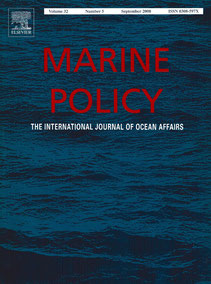Marine Policy 76, 8-18; Open Access
This TBTI-supported publication explores boundaries in world's fisheries and opens up discussions for a more nuanced boundary application that can better cope  with multi-level interactions and dynamicity. Spatial boundaries have become an indispensable part of regimes and tools for regulating fisheries, with examples including marine protected areas, regional fisheries management organizations and Exclusive Economic Zones. Yet, it is also widely acknowledged that boundaries are a social construct, which may be resisted by both fishers and fish ecology. The ensuing spatial and institutional mismatches have been shown to frustrate management efforts, exacerbating issues of non-compliance and ultimately leading to conflicts and overfishing. Interestingly, the often static and rigid nature of these boundaries has also led to a concomitant research interest in ‘transboundary’..
with multi-level interactions and dynamicity. Spatial boundaries have become an indispensable part of regimes and tools for regulating fisheries, with examples including marine protected areas, regional fisheries management organizations and Exclusive Economic Zones. Yet, it is also widely acknowledged that boundaries are a social construct, which may be resisted by both fishers and fish ecology. The ensuing spatial and institutional mismatches have been shown to frustrate management efforts, exacerbating issues of non-compliance and ultimately leading to conflicts and overfishing. Interestingly, the often static and rigid nature of these boundaries has also led to a concomitant research interest in ‘transboundary’..
The aims of this review article are twofold: (1) a theoretical clarification on the meanings and uses of spatial boundaries drawing on geographical “boundary studies” literature; and (2) a construction of a typology that outlines how transboundary research is being articulated and envisioned. Together, the study reveals that transboundary scholarship in fisheries are mostly related to resources, fleets, trade and governance aspects and that dealing with the “boundary paradox” encompasses re-incorporating, re-scaling and re-imagining of boundaries..
The article is written by TBTI cluster coordinators Andrew M. Song, Joeri Scholtens, Johny Stephen, Maarten Bavinck, and TBTI Project Director Ratana Chuenpagdee as part of the 'Transboundary Interactions' research cluster..
To find out more, read the full article.















